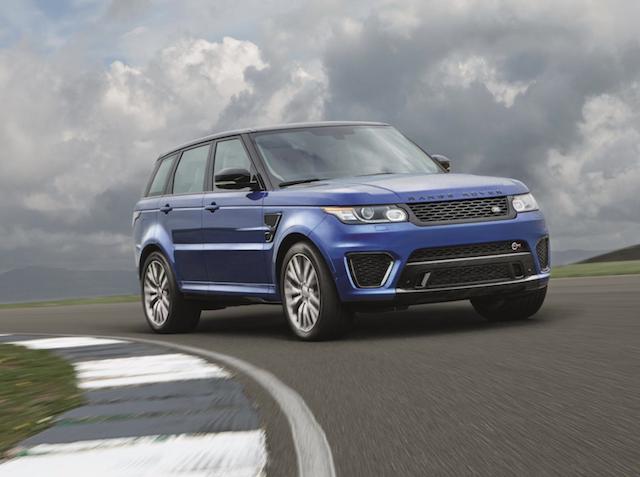
The Range Rover Sport SVR that set a lap record for an SUV on Germany’s infamous Nurburgring circuit will go on sale in New Zealand early next year and become the new halo model in a line-up that will almost certainly be coming off a record sales year in 2014.
At the end of July Land Rover sales – Range Rover Sport, Vogue, Evoque, Land Rover Defender, Discovery, Freelander 2 – of around 580 units were up 89 per cent on the same period last year. It wasn’t long ago that Land Rover NZ would have been jumping for joy over 200 sales in seven months.
“Every car line is doing well – sales are balanced right across the range,” said Land Rover sales manager Helen Sunley. “Freelander 2 is on runout but it is still out-performing where it was last year. What we have on the ground here is it. There will be no further production of Freelander after this month.” The Range Rover Sport is the most popular model with sales to the end of July of 161 units, compared with Vogue’s 102, Evoque’s 105 and Discovery’s 102.
 The NZ price of the new Sport SVR is expected to be fixed next month. In England it is the equivalent of $NZ23,500 more than the standard RR Sport, which retails here for $185,000. A wild guess? Perhaps somewhere near $210,000.
The NZ price of the new Sport SVR is expected to be fixed next month. In England it is the equivalent of $NZ23,500 more than the standard RR Sport, which retails here for $185,000. A wild guess? Perhaps somewhere near $210,000.
It is the latest vehicle to emerge from Jaguar Land Rover’s new Special Vehicle Operations performance division, following the Jaguar F-Type’s Project 7. The SVR is Land Rover’s most powerful production vehicle ever, its supercharged 5.0-litre V8 petrol engine delivering 405kW and 680Nm of torque to all four wheels via an eight-speed gearbox. That’s 30kW and 56Nm more than the same capacity engine in the standard RR Sport.
The specially tuned drivetrain and the all-aluminium architecture (39 per cent lighter than the previous RR Sport) got the SVR around the 20km Nurburgring in 8 minutes 14 seconds, around the same time as the BMW M5, Mercedes-Benz C63 AMG, BMW 1-Series M coupe, Porsche Boxster S, Porsche Cayman S, and Nissan Skyline GT-R R33. The SVR’s time was exactly 10 seconds slower than an Audi R8 V8.
Also helping the SVR to keep cooler while flying faster are the deeper front bumper and larger air intakes, while the more prominent rear bumper and new rear diffuser are both designed to boost aerodynamic efficiency. A two-stage active exhaust featuring electronically controlled valves, with quad pipes at the back, provides a throatier soundtrack and a boost in performance at higher revs.
Shift times from the eight-speed gearbox have been cut by up to 50 per cent thanks to fuel cut-offs during upshifts, and the rear locking differential locks up earlier to send power to the rear wheel with most traction. The ride height is unaltered, although modified pistons and dampers for the air suspension are said to significantly improve body control.
Land Rover will fit 21-inch alloys with all-season rubber to the Sport SVR as standard, although optional 22-inch wheels wrapped in sticky Continental SportContact performance tyres will offer improved traction. The high-performance model is unlikely to spend any time off road, but a low-range gearbox is standard along with a wading depth of 850mm and a braked towing capacity of three tonnes. The Sport SVR will be a star attraction at this week’s Pebble Beach Concours d’Elegance in Monterey, California.
• The first ever Range Rover, chassis number 001, will go under the hammer in London on September 4 and is estimated to fetch between $NZ200,000 and $NZ300,000. It was built between November 24 and December 17, 1969, before being registered on January 2, 1970, nearly six months before the official launch of the Range Rover. Unusually, the vehicle retains all its original components; chassis, 3.5-litre V8 engine, gearbox, axles, aluminium bonnet, body shell, and number plate YVB 151H.

